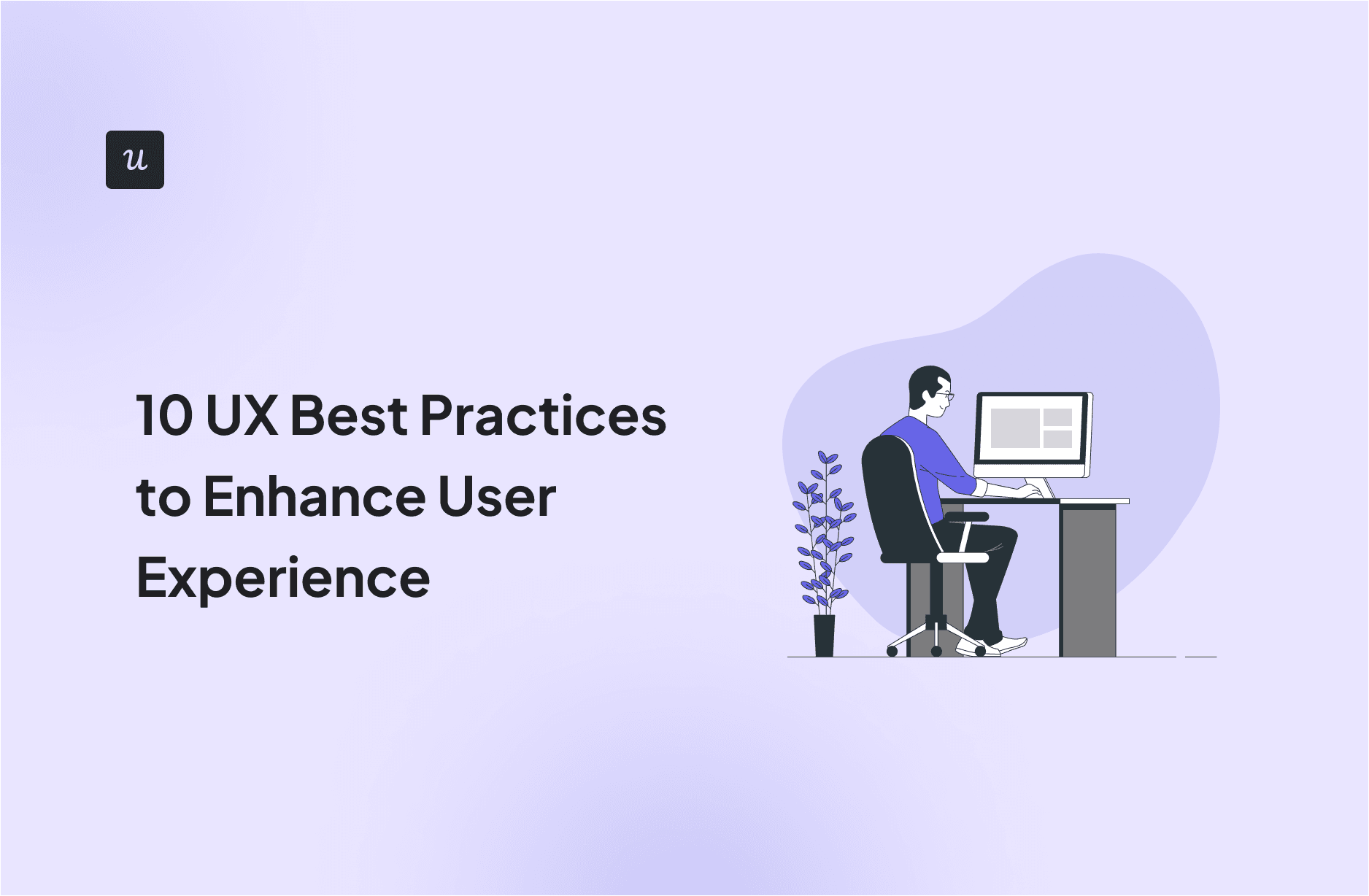
Following UX best practices is essential to make the product experience more intuitive and efficient.
But which strategies are worth following to improve product engagement?
For this, we’ll explore the principles of UX design and go through the best practices that align with them.
Try Userpilot Now
See Why 1,000+ Teams Choose Userpilot

What is UX design?
UX design—short for User Experience Design—focuses on creating products that offer meaningful and relevant experiences to users.
It involves the entire process of acquiring and integrating the product, following its principles of value, usability, adaptability, and desirability.
The goal of UX design is to create products that are functional and delightful to use—making them more effective and engaging for users.
Key UX design principles
User Experience (UX) design has many principles that ensure your products are intuitive, engaging, and effective. They represent a foundation for creating exceptional user experiences.
That said, here are the principles every UX designer should learn first:
- User-Centered Design. Always prioritize the needs, preferences, and limitations of the end-users at every stage of the design process.
- Accessibility. Design for inclusivity, ensuring that all users, including those with disabilities, can use the product effectively.
- Aesthetics. Design aesthetically pleasing interfaces as users often perceive visually attractive products as easier to use.
- Consistency. Maintain uniformity in design elements and interactions throughout the product to ensure a seamless user experience.
- Usability. Make sure the product is easy to use, with intuitive navigation, clear instructions, and simple interactions.
- Flexibility. Allow users to customize their experience to suit their preferences and needs, enhancing overall satisfaction.
- Error Prevention and Recovery. Design to minimize the risk of user errors and provide easy ways to recover from any mistakes.
UX design best practices for seamless user experience
With these principles in mind, let’s go over 10 UX best practices you can apply in SaaS:
Conduct user research to understand what users expect
The first step UX designers need to achieve before building a product is to know the audience.
For this, perform extensive customer research with surveys, interviews, and product analytics. With this data, you can understand what job they need to get done with your product, their goals, and what path they should take to achieve success.
Then, create empathy maps, customer journey maps, or customer success playbooks according to the insights you’ve collected. Also, you’ll be able to group your user base into different segments to create user personas based on their JTBDs, job titles, use cases, goals, journey stages, and in-app behaviors.
For example, here’s a template from Miro that you can use as a base:

Utilize familiarity throughout your UX design process
An intuitive product experience comes from familiarity—the sense that you’ve already used a product like this in the past.
For this reason, it’s important to follow a format that users are already familiar with.
For example, when prototyping your product’s navigation experience, you should have a clear idea of the design method you’re going to follow, including:
- Object-oriented. Object-oriented navigation treats each feature of your product as an independent unit. It replaces traditional hierarchy and a dedicated page for a more free structure where users can navigate freely between functionalities.
- Task-oriented. Task-oriented navigation structures the UX around the specific tasks that users need to accomplish. This means grouping features and tools according to common tasks within the product’s interface.
- Workflow-based. Workflow-based navigation creates a linear, predetermined path that users follow to complete a sequence of tasks or processes.

Ensure design consistency for visual elements
When visual elements such as colors, fonts, buttons, and icons are uniform across the interface, users can easily navigate and interact with the product without confusion.
For this, it’s essential to create and follow a style guide that aligns with your brand’s aesthetics. These will help you keep the uniformity in layout and design patterns, plus it will ensure that all team members following these standards will achieve consistent outputs.
And if you’re, for example, building a resource center, you can go to the settings options for native design and customize its logo, text fonts, and color palettes to fit your brand’s style.

Implement clear navigation paths for your users
Helping users understand where they are within your app at any given moment enhances navigational efficiency and user satisfaction.
For this, patterns such as breadcrumbs, spotlights, or pointers can serve as effective location indicators.
An example is how Attention Insight used Userpilot to show an onboarding checklist the moment a user signs up.
Here, the user can click on each step of the checklist to go to the relevant page and trigger an interactive walkthrough. Then, users are handheld throughout the core features with hotspots (so there’s no way to miss them).

Leverage microcopies to enhance user experience
Effective UX copy helps users understand where each navigation option will take them.
It can be particularly effective to explain complex features and a category page with a very understandable copy.
Here are some tips:
- Make sure to review your navigation items to ensure each label is as clear and descriptive as possible.
- Avoid jargon that may not be universally understood.
- Consider including tooltips or brief descriptions for items that might need further clarification.
For instance, here’s how Miro’s signup flow leverages microcopy to help new users understand why they need to provide so much information:

Trigger targeted user flow to personalize experience
Providing a personalized user experience opens the door to improving your product’s usability and boosting user engagement.
The best way to do it is by segmenting your user base and creating a relevant product experience for each.
For instance, you design a support flow targeting detractors based on the described issues in their NPS survey responses.

Conduct usability testing and collect user feedback regularly
A usability test measures how easy it is for users to navigate an app with a group of representative users where they are observed as they attempt to complete tasks.
These tests are a great opportunity to not only watch the user’s experience live but also to ask users how they feel about it.
That said, it’s a great idea to send CSAT or CES surveys to ask users about their opinions and find opportunities for improvement. For example, here is a survey sequence example for usability testers:

Track and analyze customer behavior to identify potential friction
Customer data is the base of a user-centric design.
With high-quality data, you can identify friction points in the user experience and improve them. This process can involve tracking user behavior, mapping out the customer journey, and paying attention to key engagement metrics like churn rate, session length, and user activity.
For instance, you can perform funnel analysis to identify stages where users are experiencing friction and dropping. This way, if there’s a substantial drop in engagement during the onboarding process, you can plan guidance to make it more user-friendly or interactive.

Monitor user satisfaction to measure success
The best way to measure the effectiveness of your product’s design is by asking your existing users directly.
For this, segment your users and target in-app surveys such as CES (customer effort score), CSAT, and NPS surveys to understand their points of view. These will tell you how easy it is to navigate your product, how satisfied your users are, and how likely they are to recommend it.
These targeted surveys let you collect feedback that’s relevant to their specific needs, iterate your product design strategy, and close the feedback loop.

Implement a resource center to offer instant help
A great opportunity to offer a top-notch user experience is through an in-app resource center. It prevents users from leaving your app to solve their issues and experiencing friction.
To create an effective knowledge base:
- Identify common issues that make customers drop off and disengage.
- Survey your users, review your support tickets, and examine your usage data to see what’s causing friction and pushing customers away.
- Create help resources in different formats to directly tackle these challenges. It can include FAQs, tutorial videos, step-by-step guides, or help articles.
- Organize your resources in content modules so users can find resources that are relevant to them.

Conclusion
Following these UX best practices will make your product more pleasant to use, motivate users to stay with your brand, and stimulate product growth.
By conducting proper research, designing consistent assets, and being mindful of your UX design approach, your product will be on the right path to achieving competitive advantage.
Interested in leveraging user data to improve your product’s UX? Book a Userpilot demo to explore how!








